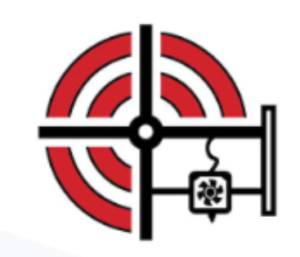Jeph Ruppert may have only been at Fortius Metals for a couple of months, but he knows the intricacies of additive manufacturing (AM) like someone who’s been steering the company for years. With a career rooted in metal AM, including time at Medical Modeling and later 3D Systems after its acquisition, Ruppert has spent over a decade deep in powder-based additive. Now, he’s bringing that expertise to the wire-fed world, and he sees real potential.
“I’ve always been keen to understand what Fortius was doing,” Ruppert tells 3DPrint.com. “It’s a small community here on the Front Range of Colorado, and I’ve been aware of their work for years. When the opportunity came up to get involved directly, it just made sense.”
Fortius Metals specializes in advanced aluminum alloys for Directed Energy Deposition (DED), a form of wire-based AM that’s often “overshadowed” by powder-based approaches like laser powder bed fusion (LPBF). But that may soon change. Ruppert is convinced DED is ready for growth, and he says Fortius is ready to lead.
“Nobody welds aluminum unless they have to; it’s a real headache,” he laughs. That pain point is exactly what drew him in: “Aluminum is everywhere, from aircraft fuselages to Tesla fenders, but it’s notoriously difficult to weld. That’s why what Fortius is doing is so exciting: we’re making traditionally unweldable materials not only weldable, but reliable for high-performance applications in high-criticality industries.”
Materials with Muscle
Fortius has developed proprietary RAM2 wire alloys, including 6061 and 7075 aluminum, that perform in applications where conventional aluminum wires fall short. These aren’t just off-the-shelf spools. In fact, Ruppert describes a vertically integrated production process that begins with large-diameter wire and ends with customer-specified diameters, complete with coatings and optimized welding parameters.
“7075 is the top of the food chain when it comes to high-strength aluminum,” Ruppert notes. “It’s incredibly valuable for structural parts, especially in aerospace and defense. But it’s notoriously tough to weld. That’s why we’ve spent a lot of time optimizing welding parameters and maturing the material. It’s not just about making the wire, it’s about ensuring performance and reliability throughout the build process.”
The company is also developing a modified version of 2024 aluminum, known as 2024 RAM2. This is an alloy traditionally known for its high strength and fatigue resistance, especially in aerospace. However, standard 2024 is also notoriously difficult to weld, explains Ruppert. So, Fortius is tailoring its RAM2 variant for wire-based AM, hoping to unlock that performance in DED applications where welding quality and consistency are critical.
While still in early development, Ruppert sees significant potential: “It’s a challenging material, but with the right process control, we think we can make it viable for structural use in additive.”
Meanwhile, Fortius is exploring what could be a real breakthrough, a low-magnesium 5000 series alloy designed specifically for DED that doesn’t require post-process heat treatment. This would eliminate one of the most time- and cost-intensive steps in manufacturing large, thin-walled aluminum structures.
“If you don’t have to heat treat, you avoid the distortion risks and the logistical headaches,” he explains. “That’s especially appealing for space and defense applications, where thermal cycling, sensitization, and part size often complicate conventional approaches. We’ve got a proposal in with NCDMM [National Center for Defense Manufacturing and Machining] right now. If it goes through, it could unlock new options for both fabrication and repair.”
More Than Just Wire
Fortius isn’t just shipping materials, it’s building the workflow around them. That includes a software tool capable of running thermo-mechanical simulations to optimize both toolpaths and welding parameters, explains the executive.
“We’re not just creating a toolpath. We’re generating the best possible welding parameters along that path. That’s unique. It’s about control, about creating a more homogenous microstructure without needing a PhD to run the machine. Think of it as DED meets automation. The long-term vision is a wire-based system as easy to run as a desktop FDM printer. If we can make it as simple as running a Fortus 450, that would be great. If we can make it as simple as a Bamboo Labs printer my five-year-old could use, then we’ve really done something.”
Applications That Matter
But not every market is the right fit, explains the CEO. Right now, the company is focusing on the aerospace, defense, and energy industries where reliability, strength, and performance matter most, and where the company’s materials and processes can truly stand out.
Space applications are a natural fit: “Aluminum is great for space, it’s lightweight and strong, but again, welding it is a nightmare. Our materials help with things like propellant tanks, cryogenic vessels, and satellite components,” Ruppert says.
On the defense side, the challenge is the supply chain. Ruppert explains that there is a lot of interest in using stronger aluminum for ground vehicles. But today, designs are limited by the need to use weldable but weaker materials. He believes Fortius can change that.
There’s also growing traction in nuclear energy. Fortius’s materials offer neutron shielding and other advantages. As the small modular reactor (SMR) market expands, Ruppert sees real potential: “It’s early, but the functionality we can bring is really exciting.”
Even electric vehicles (EVs) are on the radar, but cautiously. “It’s a volume game with EVs. They are super cost-sensitive, so we’d likely collaborate with others to explore that.”
Collaborating, Not Competing
One of the company’s biggest strengths is its openness to working with others. Instead of trying to build everything itself, Fortius focuses on helping other companies succeed with its materials and tools.
“There’s no clear winner in DED yet,” Ruppert notes. “That’s what makes it exciting. We want to work with everyone, including OEMs, integrators, and even competitors. Our job is to make the material work.”
Their in-house robotic welding cells, for instance, aren’t there to build parts at scale. Instead, they exist to help Fortius fine-tune its parameters and make it easier for others to adopt its materials. That open mindset also extends to Fortius’s software strategy.
“We’re still defining the business model,” Ruppert states. “But whether it’s licensing or bundling, the goal is to make DED more accessible.”

Fortius Metals’ Nick Bagshaw and Ale Yearsley with a rocket nozzle. Image courtesy of Fortius Metals.
For Ruppert, the mission is clear: to simplify AM. He makes comparisons to metal injection molding and the early days of robotics, both of which were difficult for most people to understand or use.
“AM shouldn’t be a black art,” he says. “You shouldn’t need an army of SMEs [subject matter experts] to run a machine. We want to democratize that.”
It’s an ambitious goal, but Ruppert seems determined: “We have to be faster than the big guys and more focused than the other small guys. That’s how we win.”
From exotic aluminum alloys to smarter DED workflows, Fortius is quietly reshaping what wire-based AM can do. And with Ruppert at the helm, it won’t stay quiet for long.
Subscribe to Our Email Newsletter
Stay up-to-date on all the latest news from the 3D printing industry and receive information and offers from third party vendors.






